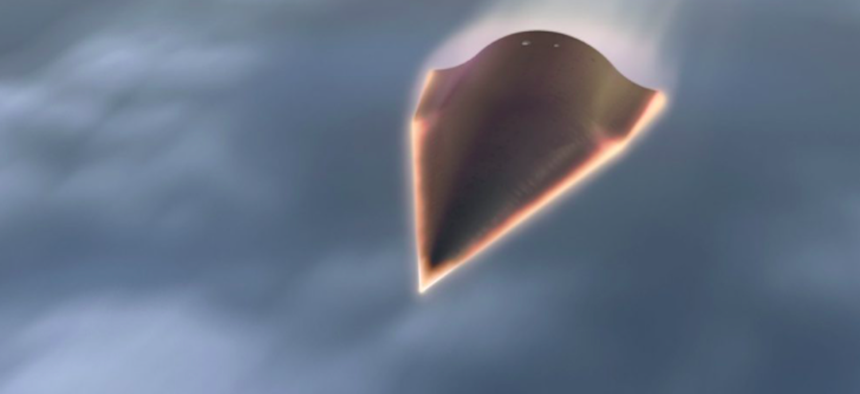PATRICK TUCKER

The “deeply concerning” test of a Chinese hypersonic missile shows that the United States has “a lot of work to do” on technology and policy, military officials and lawmakers said yesterday.
The August test, first reported in the Financial Times, featured a hypersonic glide vehicle that entered orbit. Hypersonic weapons descend at more than five times the speed of sound while retaining enough maneuverability to evade missile defenses designed for the more predictable paths of ICBMs. China’s recent orbital test suggests that a weapon based on its vehicle could have essentially unlimited range.
China was thought to be considering such a capability, Air Force Secretary Frank Kendall said last month. Speaking at an Air Force Association event, he compared it to the Soviet Union’s Fractional Orbital Bombardment System, “which is a system that basically goes into an orbit and then de-orbits to a target. And if you use that kind of approach, you don’t have to use a traditional ICBM trajectory, which is directly from the point of launch to the point of impact. It’s a way to avoid defenses and missile warning systems. So that’s a potential thing that can be done. There’s also the potential to actually put weapons in space. And these are potential things we’re talking about at this point in time.”
In 2019, Gen. Paul Selva, then vice chief of the Joint Chiefs of Staff, described the problem thus:
“If you’re going Mach 13 at the very northern edge of Hudson Bay, you have enough residual velocity to hit all 48 of the continental United States and all of Alaska. You can choose [to] point it left or right, and hit Maine or Alaska, or you can hit San Diego or Key West. That’s a monstrous problem.”
Sen. Michael Bennet, D-Colo., said on Monday, “China’s capabilities are extraordinary. We have a lot of work to do to make sure that we’re defending the United States of America in the case of potential aggression. I hope it never comes to that but we need to make sure that we’ve got a strategy and approach to neutralize these threats as they arise.”
Rep. Jason Crow, D-Colo., said that the test “underscored the important decision President Biden made to end our combat operations in Afghanistan, because we can’t do everything. We have limited resources. We have extraordinary threats, and it’s our job to decide how we’re going to allocate those very limited resources to the biggest and the growing and the most evolving threats. That’s what we’re working to do.”
The Pentagon is working toward the launching of a new constellation of low-earth-orbit satellites to track maneuverable hypersonic weapons more closely, to provide additional response options. Several service branches are working on hypersonic weapons of their own.
Air Force Col. Kristopher Struve, vice director of operations for North American Aerospace Defense Command, said on Monday, “The thing that concerns us with hypersonics is our warning time and our warning capability, as these things launch high and then cruise at a lower altitude than we see our normal ICBMs. So it's that ability to provide a warning to our national leadership, what that threat is and it's really a policy on.” U.S. policymakers have some thinking to do about how to treat hypersonic missiles that can strike from orbit, Stuve said at an event hosted by the Missile Defense Advocacy Alliance. One question is whether the United States should defend countries that lack hypersonic missiles as it pledged to defend non-nuclear armed states during the Cold War.
“Do we want to add technology to be able to intercept them [and] defeat them or do we want to treat them underneath our nuclear umbrella?” he said, “I think it is probably a great discussion [and] very different than [the one that might occur around] a regional hypersonic threat.”
The test should make the U.S. less confident in its estimations of China’s current and future capabilities, said Air Force Brig. Gen. Christopher Niemi, the director of strategy, plans, programs, and requirements for Pacific Air Forces.
“In the past, we put a lot of confidence in our assessment of what an adversary like China will do in the future and we use that to inform how we want to make our investments,” Niemi said. “One of the lessons I've taken from my own experience [is] that we should look at what is possible from a physics perspective, as opposed to what we think they're going to do, because China, again and again, has proven that if it is possible within physics and it will surface in other hole in our swing that they will do it.”
No comments:
Post a Comment